Comet Lake-S: Hit me 14nm One Mo’ Time
There’s no going around it: Intel is hanging on as much as it can but with the competition scoring numerous victories as of its last-gen while Intel is struggling, a loss at this stage may mean that this is Intel’s “Last Dance” at the top of the gaming mountain. There’s no revenge narrative or breaking-the-stalemate story here. It’s one of survival. Battling to keep a market position Intel has hold onto for such a long time that criticisms of its their lax development may ring true now that they have are trying to fight back an ever-evolving Ryzen threat.
March 2021 Update: Intel has released the Intel Rocket Lake-S desktop CPUs. See our reviews for those CPUs here: Intel Core i9-11900K CPU Review and Intel Core i7-11700KF CPU Review
Today, Intel releases its 10th-gen consumer desktop CPU to the market and in this review we’ll be taking a look at the current flagship of the Comet Lake-S stack with the Intel Core i9-10900K. This 10-core CPU is perhaps their last bid into claiming a win against AMD, brandishing a 5.3Ghz boost – albeit for a single core – and a nominal Turbo of 4.Ghz. Of course all of these have a catch and we’ll talk about that in this review.
In this review we’ll take a look at the Core i7-10700K, essentially the revenge of 9900K. Our review of the Core i9-10900K is here.
I’m writing this as I just finish my Core i9 review and despite my enthusiasm about the Core i9-10900K, I feel like the Core i7-10700K is the sorry note you want to receive for that hot mess that was the 9900K, just because it was too hot. With Intel promising a better die design with a thinner substrate between the die and IHS, the temperatures are better on the the 10th-gen CPUs. That said, this makes me much more excited to actually see this Core i7 than the i9. The 10700K, as mentioned, is an 8-core CPU featuring Hyperthreading and is capable of boosting up to 5.1Ghz. It is pretty much the 9900K in many facets but is demoted to i7 status and of course, it has the improvements of this release. At $374 tray price, we’re looking at an approximately $400 retail chip, definitely lower than the 9900K.
Read on as we find out more about this Core i7 10700K in this review. Let’s begin.
Major parts of this review is shared with our Core i9 10900K review. If you’ve read that review, you can jump straight to the conclusion.
Intel 10th-gen CPU: What’s New
There’s really not a lot to talk about with the new CPU in terms of details but to dash through the specs, we do have plenty of SKUs launching and each of them are somewhat a more refined release than previous-gen. It’s much more easier to discern models this time around with Hyperthreading present in the full stack. Much more prevalent as well as Intel pointing our Thermal Velocity Boost.
If you’re not familiar, Turbo Velocity Boost sits on top of Turbo Boost 2.0 and Turbo Boost Max 3.0 but with board manufacturers can override Intel standards hence different boards having different CPU performance results but require better if not overdesigned VRMs. By default though, Intel fits the Comet Lake-S lineup from 125W and 65W.
We have the Intel Core i9-10900K sitting on top featuring a baseclock of 3.7Ghz and has a Turbo Velocity Boost(TVB) of 5.3Ghz. This is followed by no-IGP models and non-K models but we’re not interested in those so up next we have the i7 in the stack back with Hyperthreading, the i7 10700K and so forth. The chart is listed below for your reference. For a quick summary, the most noteworthy models here are the i9-10900K of course to see how Intel does 10-core on mainstream and then the i7-10700K which goes head-to-head with the 9900K versus last-gen. then we have the i5-10600K and i6-10600 for mainstream which is a great middleground for mainstream builds and at its pricepoint, its both i5 will look to beat out the 3600 and 3600X from AMD. Last up is i3-10100, the entry-level 10th-gen Core CPU this generation and this pricepoint has always been the go-to for many builders and will be a good competition for AMD’s newer entry-level CPUs.
While the CPUs may be straight-forward, the motherboards are fairly kept to the high-end for the launch wave and we’ll here more about the other 400-series chips in the coming days. For now the Z490 is the top-end motherboard chipset and will support the entire range of 10th-gen CPUs from Intel for LGA1200.
| SKU | Cores / Threads | Base Clock | Turbo Boost 2.0 | Turbo Boost Max 3.0 | All Core Turbo | Thermal Velocity Boost/All Core | TDP | Suggested Pricing (USD) |
|---|---|---|---|---|---|---|---|---|
| i9-10900K | 10C/20T | 3.7 GHz | 5.1 GHz | 5.2 GHz | 4.8 GHz | 5.3/4.9 GHz | 125W | $488 |
| i9-10900KF | 10C/20T | 3.7 GHz | 5.1 GHz | 5.2 GHz | 4.8 GHz | 5.3/4.9 GHz | 125W | $472 |
| i9-10900 | 10C/20T | 2.8 GHz | 5.0 GHz | 5.1 GHz | 4.5 GHz | 5.2/4.6 GHz | 65W | $439 |
| i9-10900F | 10C/20T | 2.8 GHz | 5.0 GHz | 5.1 GHz | 4.5 GHz | 5.2/4.6 GHz | 65W | $422 |
| i7-10700K | 8C/16T | 3.8 GHz | 5.0 GHz | 5.1 GHz | 4.7 GHz | N/A | 125W | $374 |
| i7-10700KF | 8C/16T | 3.8 GHz | 5.0 GHz | 5.1 GHz | 4.7 GHz | N/A | 125W | $349 |
| i7-10700 | 8C/16T | 2.9 GHz | 4.7 GHz | 4.8 GHz | 4.6 GHz | N/A | 65W | $323 |
| i7-10700F | 8C/16T | 2.9 GHz | 4.7 GHz | 4.8 GHz | 4.6 GHz | N/A | 65W | $298 |
| i5-10600K | 6C/12T | 4.1 GHz | 4.8 GHz | N/A | 4.5 GHz | N/A | 125W | $262 |
| i5-10600KF | 6C/12T | 4.1 GHz | 4.8 GHz | N/A | 4.5 GHz | N/A | 125W | $237 |
| i5-10600 | 6C/12T | 3.3 GHz | 4.8 GHz | N/A | 4.4 GHz | N/A | 65W | $213 |
| i5-10500 | 6C/12T | 3.1 GHz | 4.5 GHz | N/A | 4.2 GHz | N/A | 65W | $192 |
| i5-10400 | 6C/12T | 2.9 GHz | 4.3 GHz | N/A | 4.0 GHz | N/A | 65W | $182 |
| i5-10400F | 6C/12T | 2.9 GHz | 4.3 GHz | N/A | 4.0 GHz | N/A | 65W | $157 |
| i3-10320 | 4C/8T | 3.8 GHz | 4.6 GHz | N/A | 4.4 GHz | N/A | 65W | $154 |
| i3-10300 | 4C/8T | 3.7 GHz | 4.4 GHz | N/A | 4.2 GHz | N/A | 65W | $143 |
| i3-10100 | 4C/8T | 3.6 GHz | 4.3 GHz | N/A | 4.1 GHz | N/A | 65W | $122 |
Test Setup & Methodology
Multi-core enhancement is disabled by default on our test motherboard hence the 9th-gen which has it on by default, has been disabled as well.
| Test Setup: Intel “10th-Gen” | |
| Processor | Intel Core i9-10900K |
| Motherboard | ASUS ROG MAXIMUS XII EXTREME |
| RAM | Gskill TridentZ RGB DDR4-3600 32GB (8GB)x4 CL16 |
| VGA | NVIDIA GeForce RTX 2080 Ti Founders Edition |
| Storage | Seagate FireCuda 510 1TB |
| Power Supply | Seasonic Platinum 1050w |
| Test Setup: Intel “10th-Gen” | |
| Processor | Intel Core i9-10900K |
| Motherboard | ASUS ROG MAXIMUS XII EXTREME |
| RAM | Gskill TridentZ RGB DDR4-3600 32GB (8GB)x4 CL16 |
| VGA | NVIDIA GeForce RTX 2080 Ti Founders Edition |
| Storage | Seagate FireCuda 510 1TB |
| Power Supply | Seasonic Platinum 1050w |
| Test Setup: AMD | |
| Processor | AMD Ryzen 9 3900X, AMD Ryzen 7 3700X |
| Motherboard | ASUS PRIME X570 |
| RAM | Gskill TridentZ RGB DDR4-3600 32GB (8GB)x4 CL16 |
| VGA | NVIDIA GeForce RTX 2080 Ti Founders Edition |
| Storage | Seagate FireCuda 510 1TB |
| Power Supply | Seasonic P1000 Platinum 1000w |
All tests are performed in an open bench with ambient room temperature kept at 35*C (Because its summer in the Philippines.)
Motherboards are updated to the latest BIOS during time of testing kept at their out-of-box settings aside from XMP frequencies when running stock benchmarks.
As many already know, most motherboards will have varying frequency multipliers and this may affect performance overall. As this is part of their out of the box configuration we see it fit to use them as is.
As always, we’ll let the numbers do the talking.
Best Practices
- Same thermal paste and same application method used on all cooler mounting. A pre-benchmark stress test is performed to let the TIM settle. We use Thermal Grizzly Kryonaut for all our testing.
- A fresh install of Windows 10 Pro is used for every sample testing. The OS image contains all benchmarks and games. Drivers are installed after image is installed.
- An average of 3 benchmark runs is used for test sampling.
Benchmarks Used
- Maxon Cinebench R20 – Multi-threaded CPU benchmark
- Blender 3D – BMW 2.7 CPU Render benchmark
- POV-Ray 3.7.1 – Multi-threaded Render benchmark
- HWBot x265 – 1080p and 4K x265 CPU encoding benchmark
- 7zip Benchmark – a compression benchmark
- wPrime 1024M – multi-threaded prime benchmark
- SuperPI 32M – single-threaded prime benchmark
- PugetBench for Photoshop – an Adobe Photoshop benchmark developed by PugetSystems
- Adobe Media Encoder – an NLE encoding benchmark
- Corona Bench 1.3 – a rendering benchmark
- V-ray 4.10.07 – a raytracing benchmark
- 3DMark Time Spy – a DirectX12 gaming benchmark
- 3DMark Fire Strike – a DirectX 11 gaming benchmark
- PCMark10 Extended – a complete system benchmark
- PCMark10 Digital Content Creation – the content creator sub-score from the Extended test
Other Software
- Latest LAN Speed Test via LST Server
- Latest AIDA64 (Stress Test) or
- Prime95 26.6 non-AVX version – Custom 12K (Stress Test)
- Latest CPU-Z
- Latest GPU-Z
- Latest HWnfo 64-bit
Test OS Environment
- Windows 10 Pro 1909
- Latest NVIDIA GeForce Game-Ready drivers
- Latest AMD Chipset/Radeon drivers (when applicable, AMD boards)
- Latest DirectX end-user runtime
Measuring Equipment:
- Flir One USB Thermal Camera via Thermal Imaging+ app
- HP-9800 AC wattmeter with USB interface for app logging
- Sound level meter
Network Hardware
- ASUS ROG Rapture GT-AC5300 Router
We would like to thank the following for our reviews:
Thanks to UL Benchmarks for providing access to their benchmarks for our reviews.
Arithmetic Test
SuperPI 32M (Single-threaded)
wPrime 1.55 1024M (Multi-threaded)
Encoding Test
HWBOT x265 Benchmark v2.2
7zip 19
Rendering Test
CineBench R20
POV-Ray 3.7.1
V-Ray Benchmark 4.10.07
Corona Benchmark 1.3
Blender 2.87: BMW 2.7 CPU Benchmark
Content Creation Test
PugetBench for Photoshop
Adobe Media Encoder (Experimental)
System Performance – PCMark 10
PCMark10 Extended
PCMark10 Extended Test – Digital Content Creation
3DMark Benchmarks
Time Spy (DX12)
Fire Strike (DX11)
Gaming Performance (1080p) – Core i7 10700K
We’ll comparing actual gaming performance of our Intel Core i9-10900K and i7-10700K versus its direct rivals, the AMD Ryzen 9 3900X and Ryzen 7 3700X in some of the most popular games available right now. These actual gameplay tests are done using an RTX 2080 Ti to show the true gaming offering of the new Core i9 10900K and Core i7 10700K vs. the 3900X and 3700X. We’ll be testing in 1080p, 1440p and 4K in these tests. The results are below and onwards:
DOTA 2 (DX9)
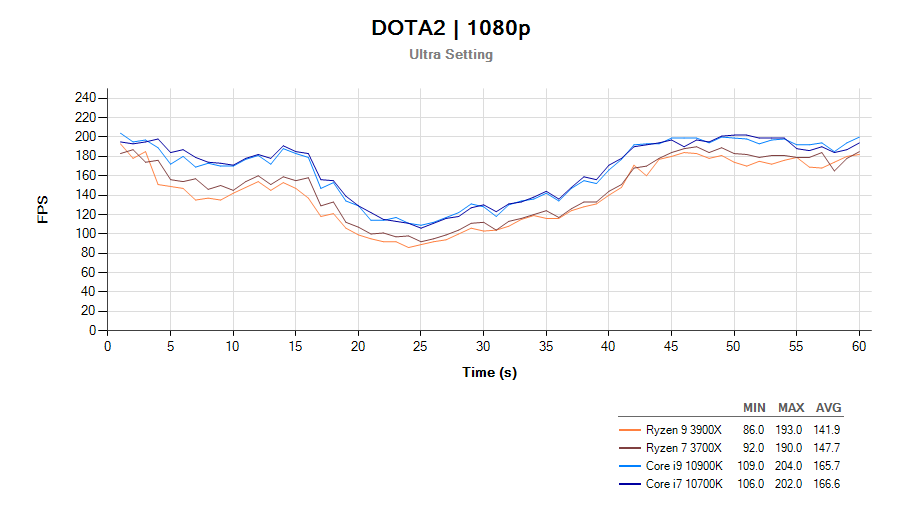
Rainbow Six: Siege (DX11)
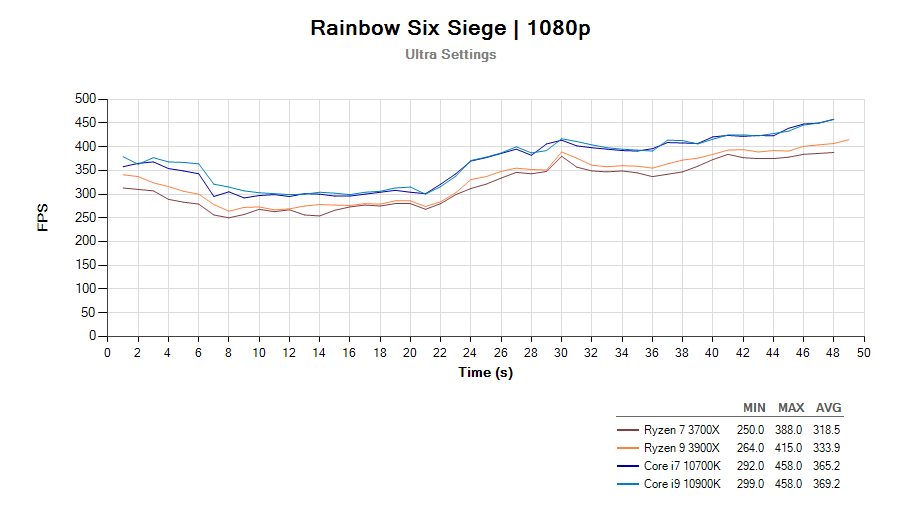
Call of Duty Modern Warfare (DX12)
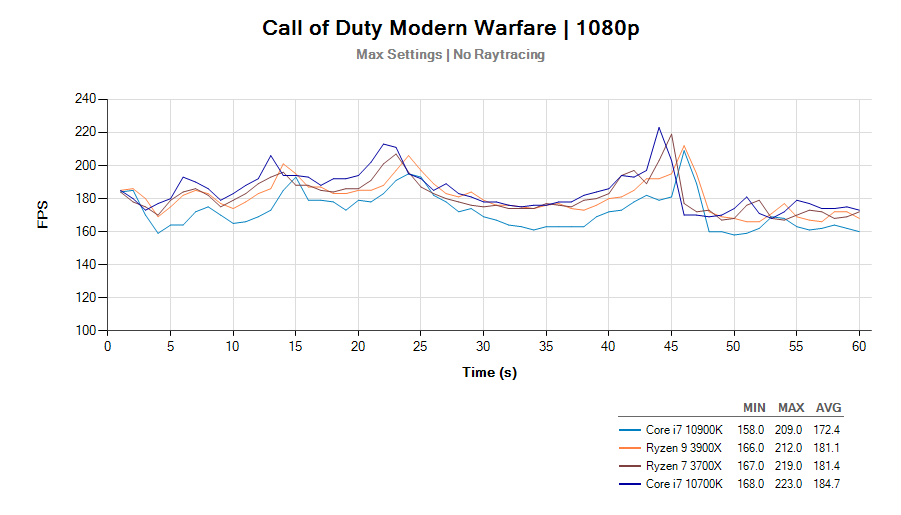
Monster Hunter: Iceborne (DX12)
Gaming Performance (1440p) – Core i7 10700K
DOTA 2 (DX9)
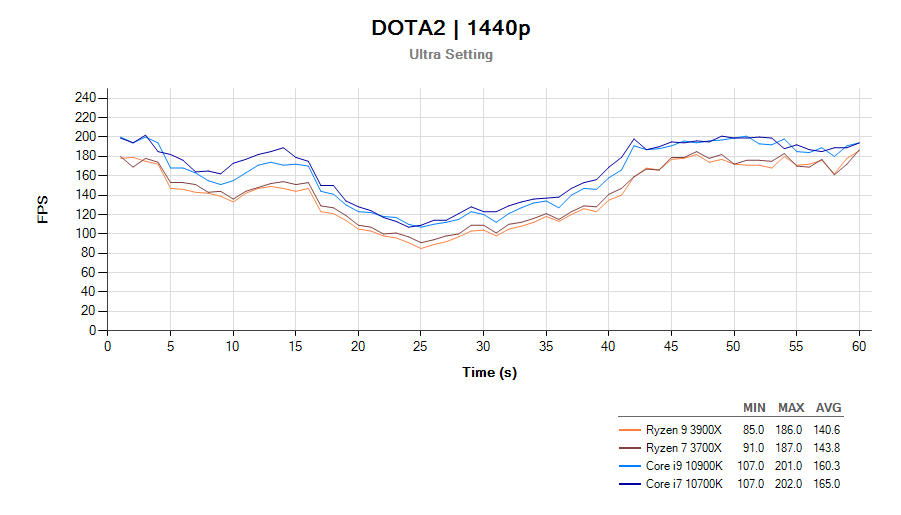
Rainbow Six: Siege (DX11)
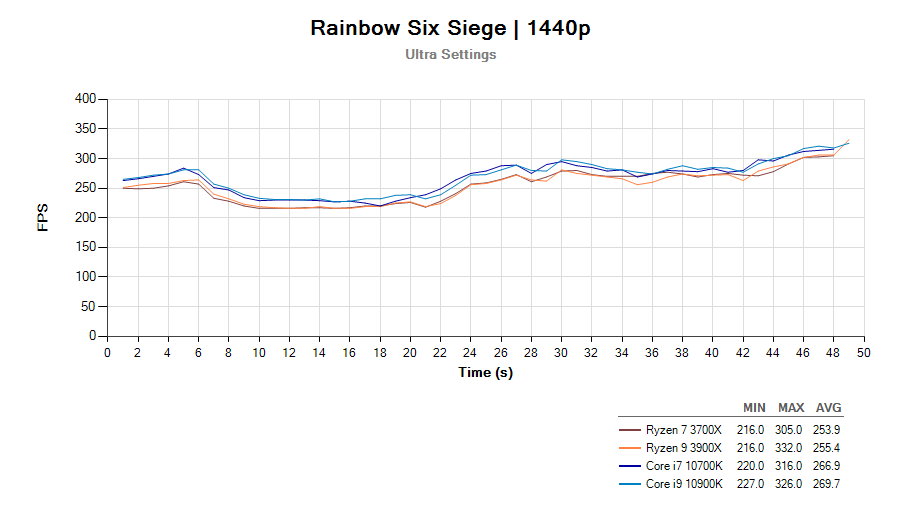
Call of Duty Modern Warfare (DX12)
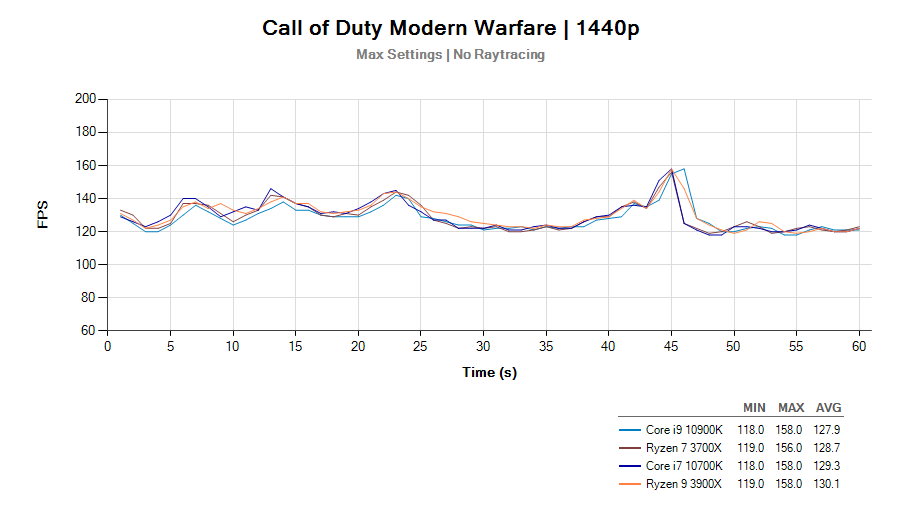
Monster Hunter: Iceborne (DX12)
Gaming Performance (4K) – Core i7 10700K
DOTA 2 (DX9)
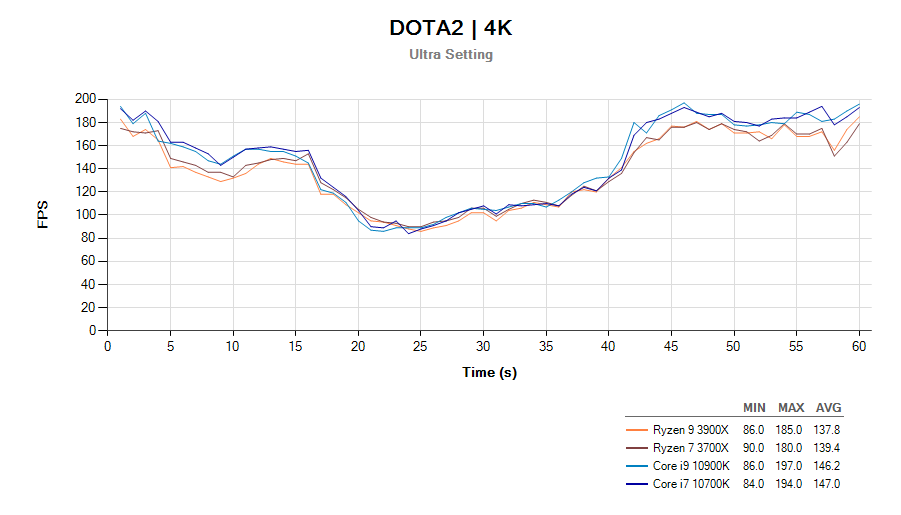
Rainbow Six: Siege (DX11)
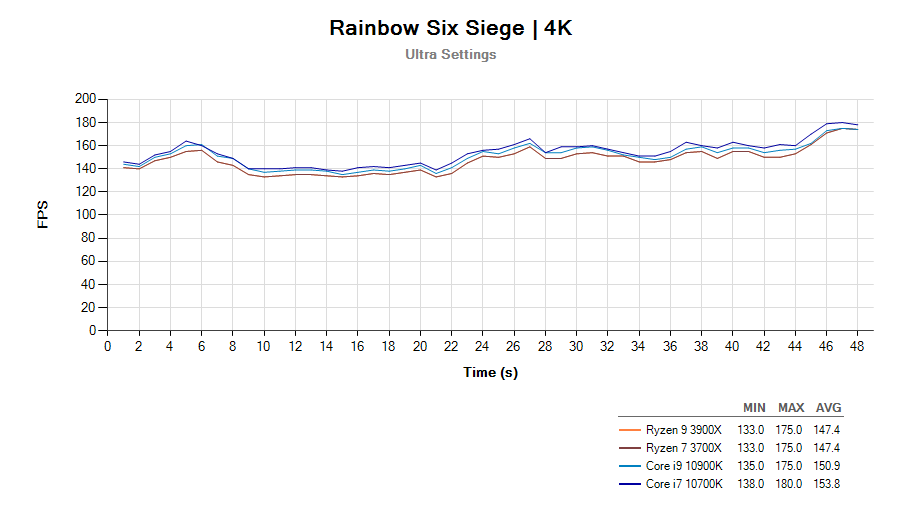
Call of Duty Modern Warfare (DX12)
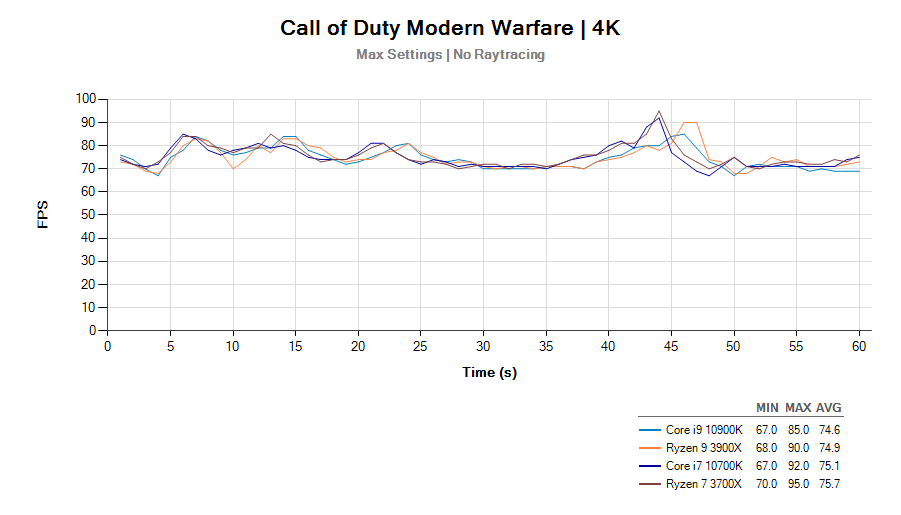
Monster Hunter: Iceborne (DX12)
Power Draw & Temperature – Core i7 10700K
To measure power draw, we hook-up our power meter on another system via USB. Our power meter is capable providing a chart of power the watts currently being consumed by the unit plug into it. We take the average of 15 minutes idle and 15 minutes load to show our power daw. Our load test is SuperPI 12K. A power virus scenario which you will never encounter on regular use. This is a worst-case scenario but is lighter on power than our previous AIDA64 stress test which is an AVX test, which draws more power than normal. The raw data from app is gathered and we get our results. Temperatures are also captures during this time.
Various configurations will play a factor on how much you are consuming and the same applies to our test. We try to keep our test bench uniform at all times (same memory, graphics card, board if possible, etc). All tests are done with the motherboard or CPU on out-of-box settings as indicated in our Test Setup page with only XMP applied.
CPUs behave on how motherboard vendors handle their boost clocks. In this case, ASUS has opted to disable multi-core enhancement on this board which restrains our CPU to default Intel settings which is a 125W TDP. ASUS has indicated that users can change this but we’re interest in seeing how processors perform on an out-of-box scenario. AMD has their own implementation but is a little more tame than what Intel permits with their motherboards. The chart below shows our 20 minute stress test with the frequency and temperature readings over time.
As you can see, both CPUs idle in their boost states in the first few seconds but once the workload is initiate a few seconds in, the difference in how they handle all-core load kicks in. Intel will have its Turbo Boost Max kick-in and that will push the CPU but only for a short duration, as it drops to its maximum 125W TDP rating. In this state, The 3900X and 10900K sit just aa few Mhz apart for the rest of the stress test.
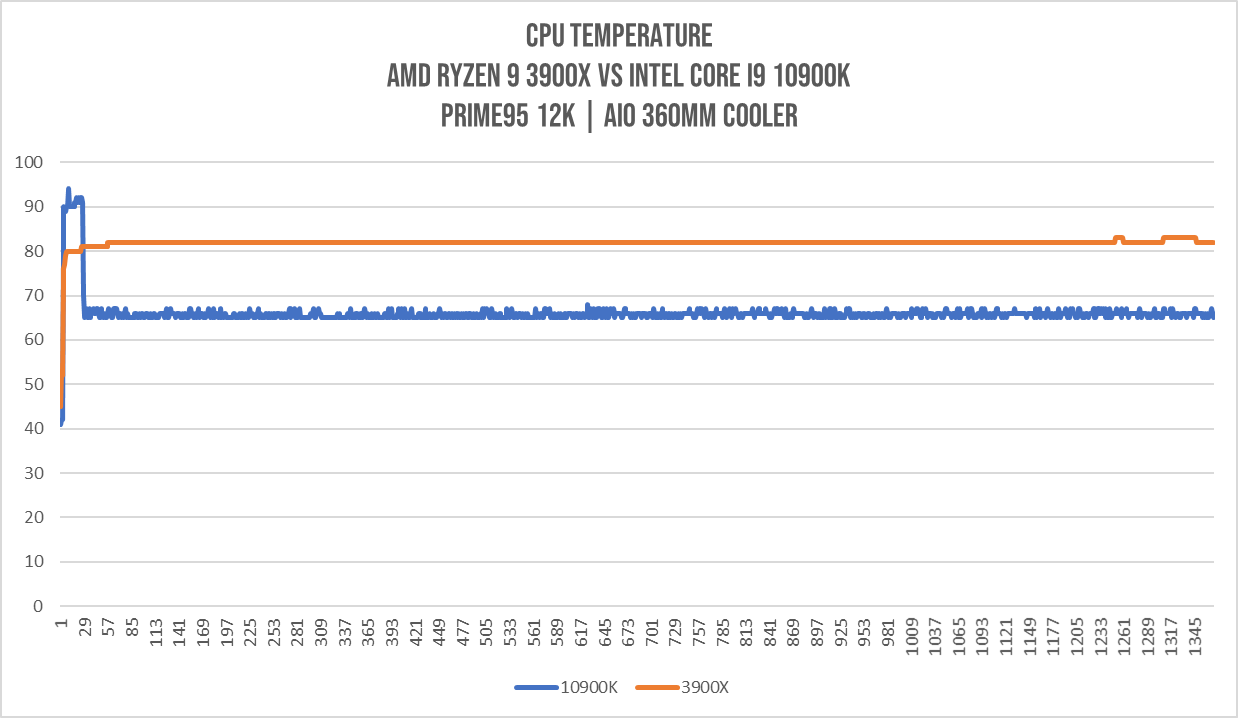
Overclocking the Core i7 10700K
Given the refinement that Intel did as well as the changes to the die makeup, their attempt at improving cooling as well as getting these chips to 5.3Ghz gives us a good crack at trying to see if these CPUs can do 5.3 at all-core load. We’ve had no luck pushing our Core i9-1090K to 5.3Ghz but we did find that most of our samples (we had two 10700Ks and a Core i9 10900K) can do 5.1Ghz although pulling that off with the i9 at decent temps was a challenge. For the i7, it was tad bit easier. We’ve delided and overclocked a couple of 9900Ks and the rules was pretty much the same for the Comet Lake CPUs. We had an ROG Ryujin 360mm cooling our CPU and a nice large 10ml syringe of Thermal Grizzly Kryonaut from Paulo Avelino (shoutout!). We’ve changed our loading scenario of instead of running AIDA64 stress test, we decided on Derbauer’s 12K Prime non-AVX load to verify stability and temps. I insisted on AVX stress testing before as I believed that games development would eventually adopt AVX512 but with AVX2 or so still prevalent, a offset of -2 or -3 should be enough if you can’t do stable no AVX offset.
Going back to the 10700K, Our first sample could do 5.2Ghz at 1.42v but that introduced throttling already. We went back to settling with 5.1Ghz and saw one of our samples capable of holding 5.1Ghz 1.3v and our other sample with 1.35v. If this variance in voltage is presence in retail chips, some folks can still settle to 5Ghz. Our sample better sample did 5Ghz at lower voltages but we’re chasing numbers here.
Conclusion: 10700K is the better 10th-gen CPU overall
With the Core i7-10700K, Intel has managed to redeem themselves with the Core i9-9900K, Despite that the though, the appeal of getting that level of performance for less is certainly intriguing but Intel’s choice to not make Comet Lake compatible with Z390 is really a waste. Intel cites reason of power delivery hence the socket change but with the core i7-10700K the glowing example of the exact same chip as the past-release, but in the spirit of making motherboard makers happy, decided to continue with the socket change. Given that, motherboard makers are pushing some really nice boards this generation, albeit a bit pricey, but still might be worth checking out. The main argument here is that Intel could’ve done a better job in keeping their current customers happy, saving them face from the tech community. But profit, profit.
Performance-wise, nobody seems to be excited about 8-cores nowadays thanks to AMD but as they are, the Core i7-10700K manages to bring a high-clock rate 8-core into the mainstream. It is undoubtedly the best gaming CPU in the market right now, and given its 8-core, anyone who dabbles into a bit of content creation or streaming will like this CPU. This is why I noted that I was very enthused about this CPU more than the i9. That and coupled with the potential of having a 5.1Ghz overclock on all 8-cores, is a great milestone for any enthusiast. This CPU actually gives you that true overclocking feel of pushing your CPU past its price point. It’s a hollow victory but still worth noting nonetheless.
Intel wanted to hold onto the gaming crown and with this CPU, they do. Its not by a mile, but again, the Core i7-10700K managed to squeeze out a higher clock rate on all core loads than the i9 and its better temps makes this even more ideal. For games that like higher clocks, the 10700K is ideal, in our case the 10700K sat around 4.5Ghz versus the 4Ghz of the i9, giving some extra oomph when it comes to clock-friendly games. This is pretty much the primary appeal of the Core i7-10700K. A nice balance of higher clocks, decent OC potential and core count make it an ideal CPU for an upper-mainstream gaming machine.
If you’re upgrading from a 9th-gen, this definitely isn’t it and you’re better off living with the temps of your 9900K until Intel comes out from with a new architecture. For 6900K, 6950X or 8700K users that may benefit from the slight core count increase, the Core i7 10700K is definitely a good choice but this is a very congested market at the price point the 10700K is playing at. The Ryzen 7 3700X is pretty much neck-to-neck in multi-threaded applications and can compromise a few percent FPS difference. Again, the platform cost is easily the barrier in making this board a quick recommendation.
Ultimately, it’s a nice chip. I like it. Do I need it? As a 9900K user, not really. But as I mentioned, you really don’t need to be attached to Intel by the hip to like the 10th-gen release and they still do hold value particularly if you make the wise choice of assessing your use-case and if you tend to game more than you do work stuff, particularly multimedia work and content creation, the Core i7 10700K can definitely deliver.



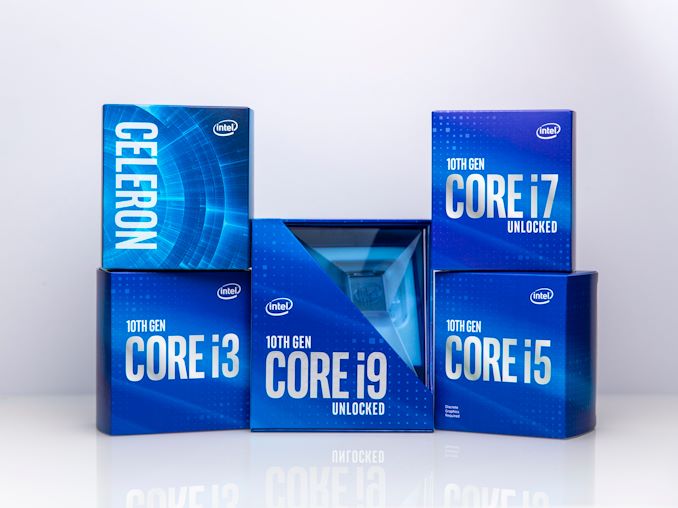

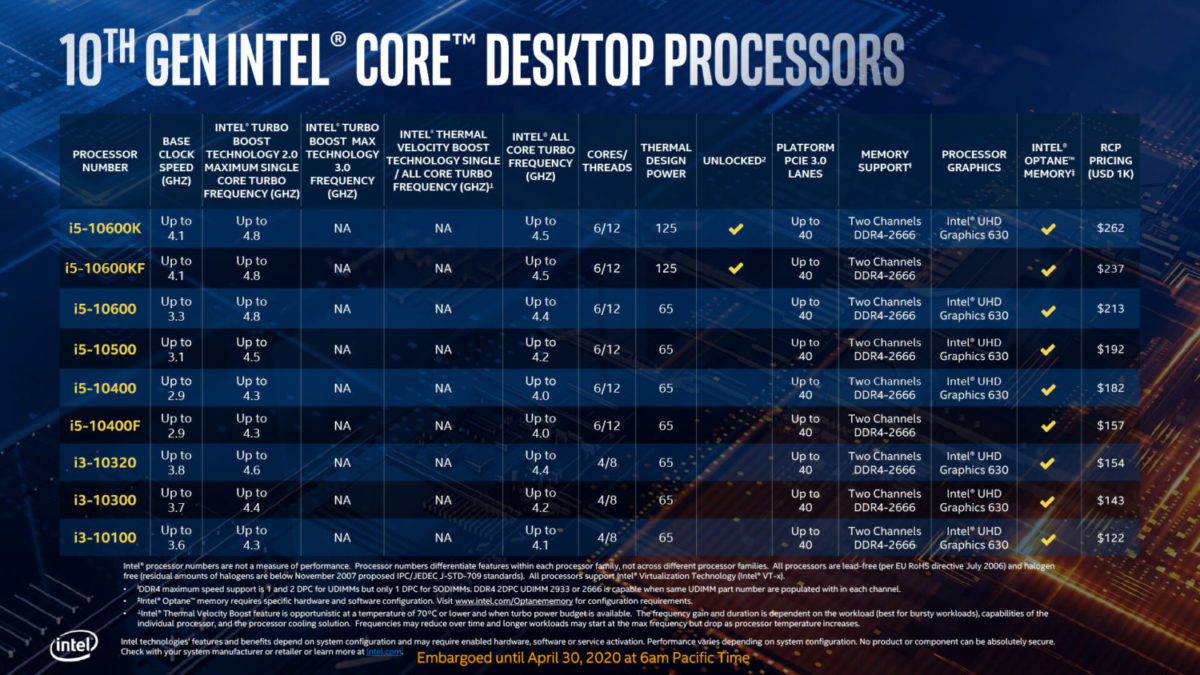
















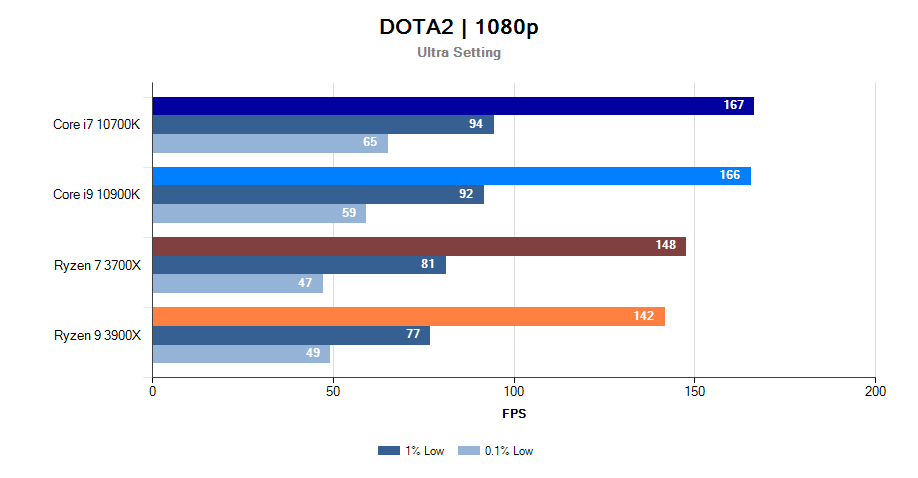
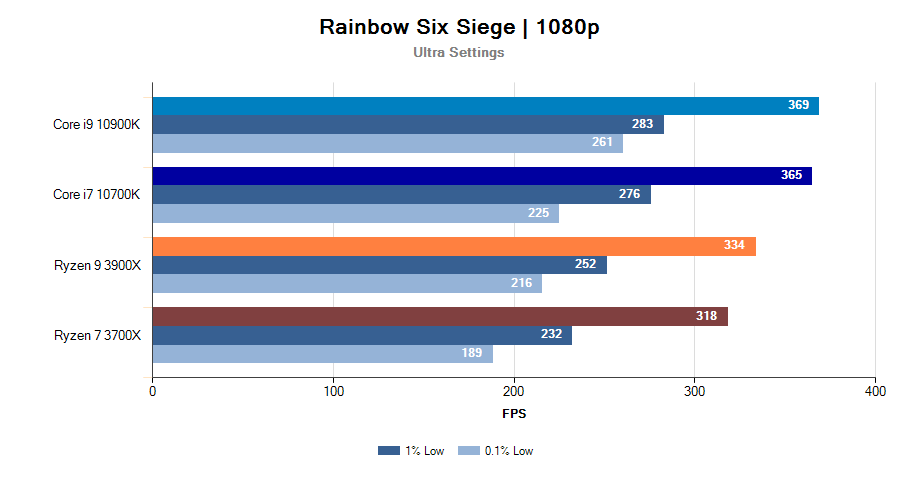
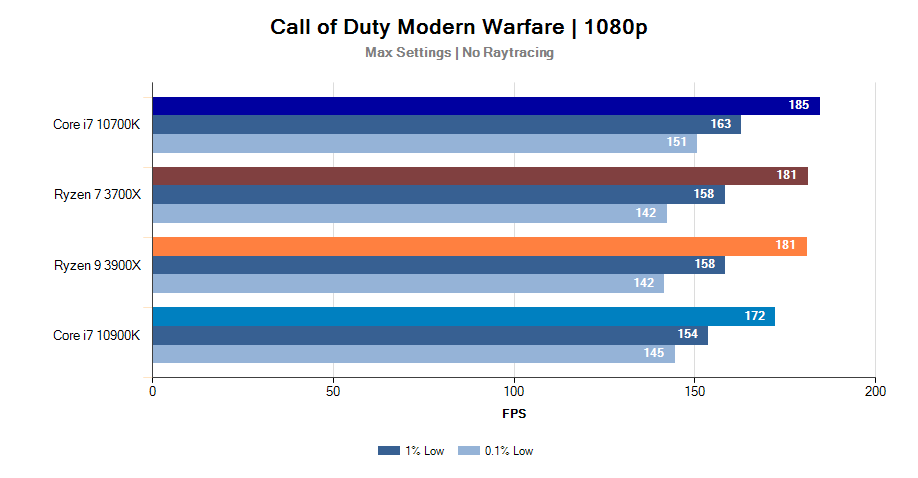
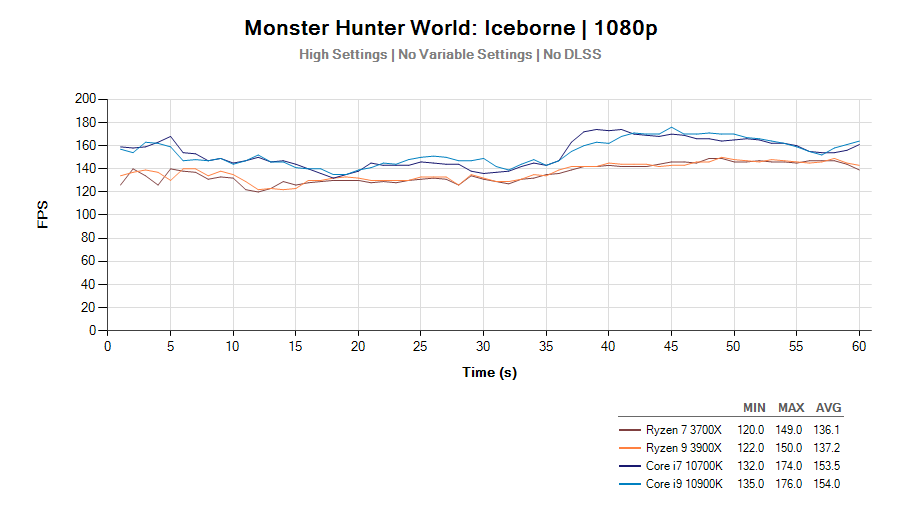
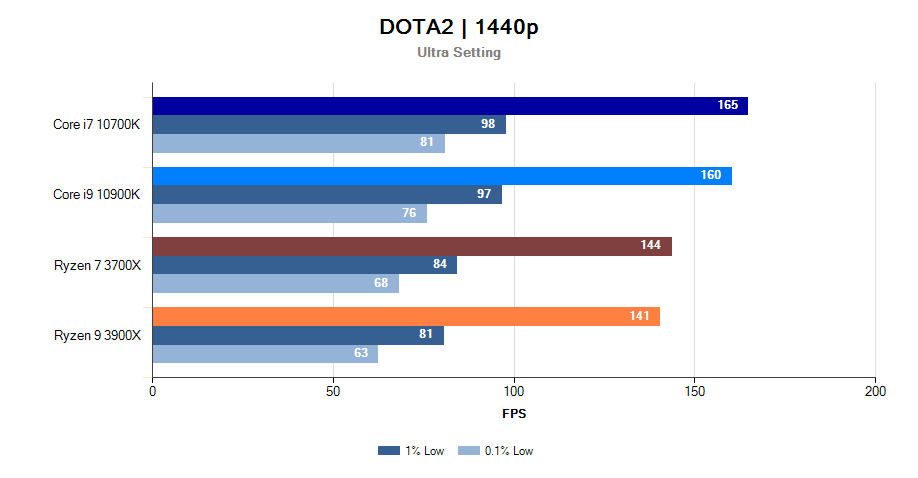
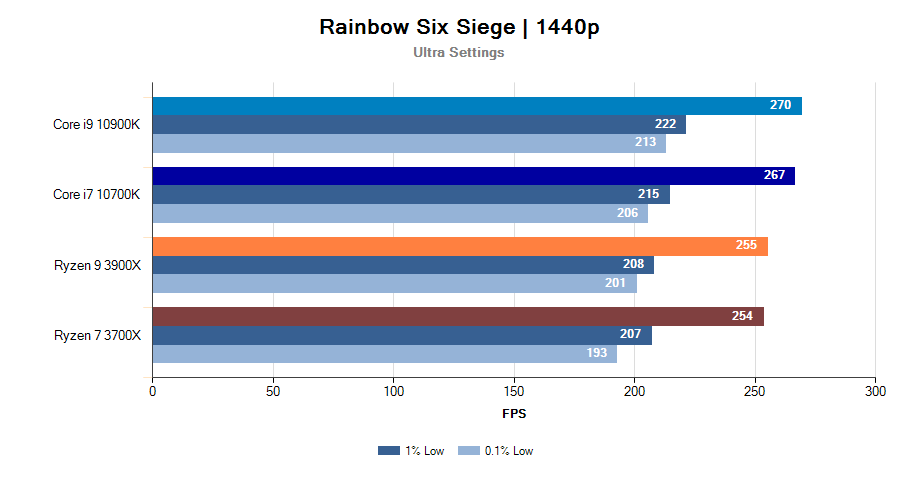
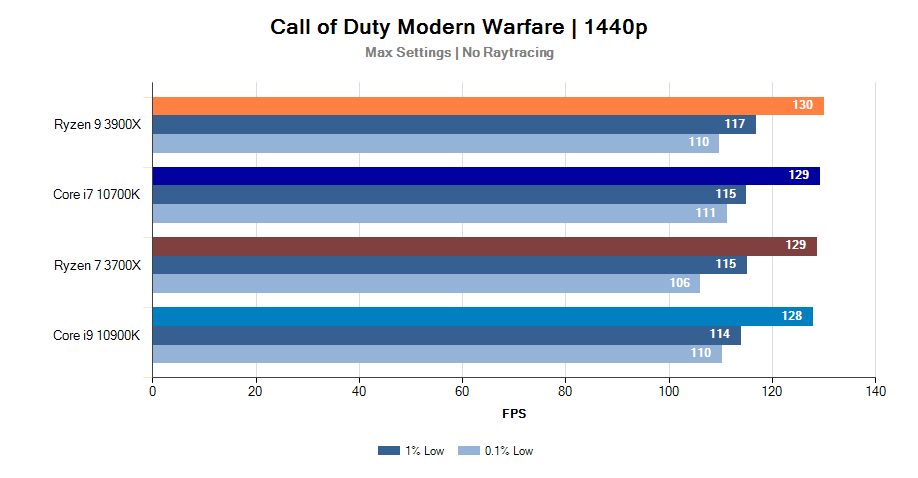
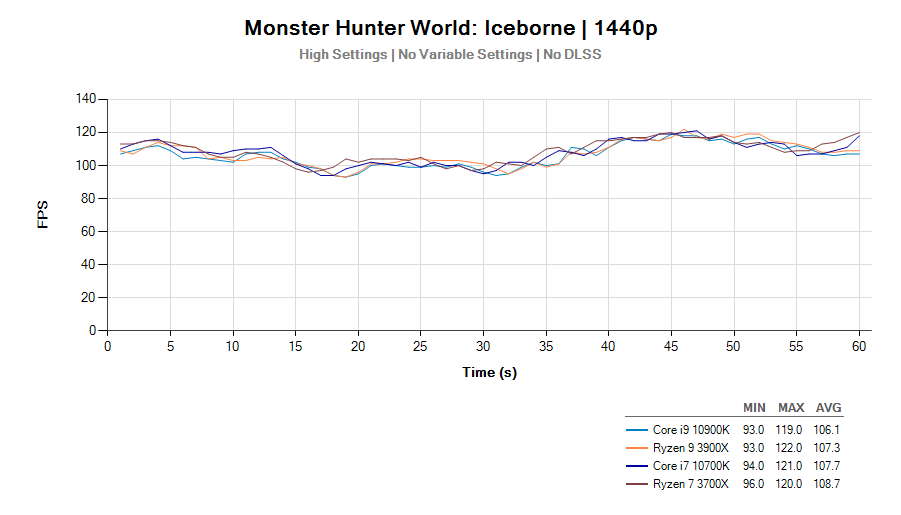
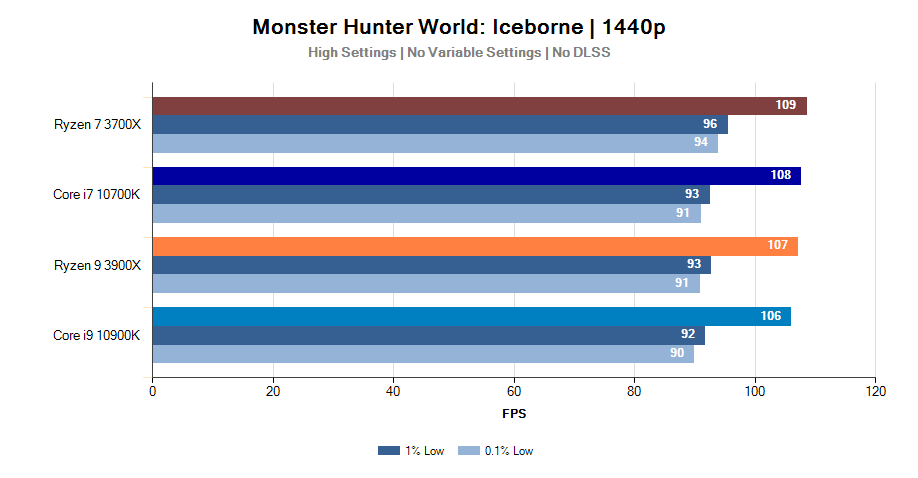
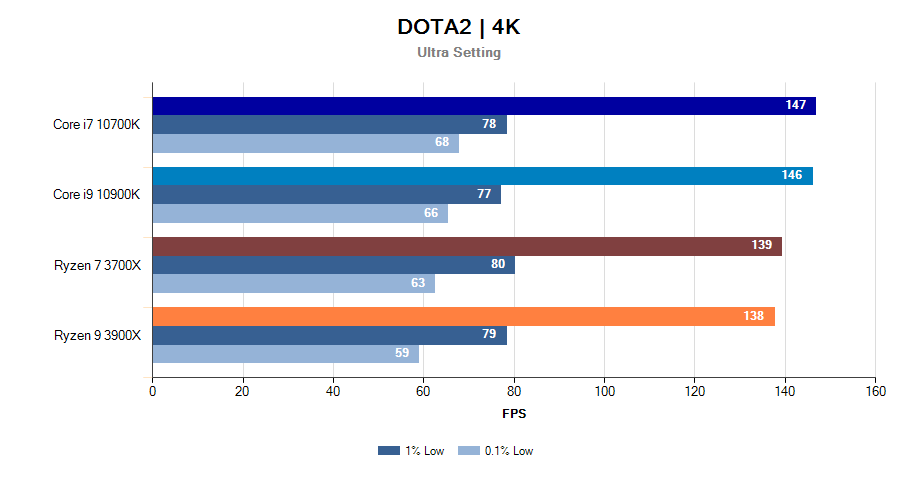
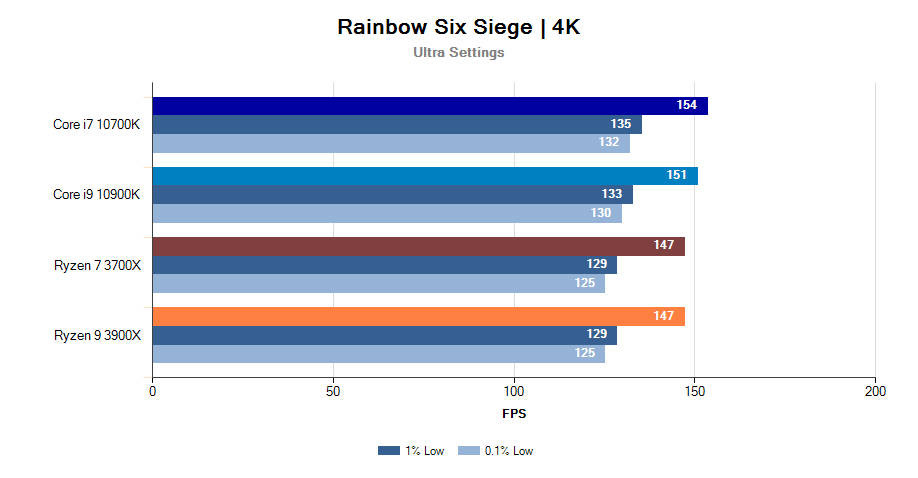
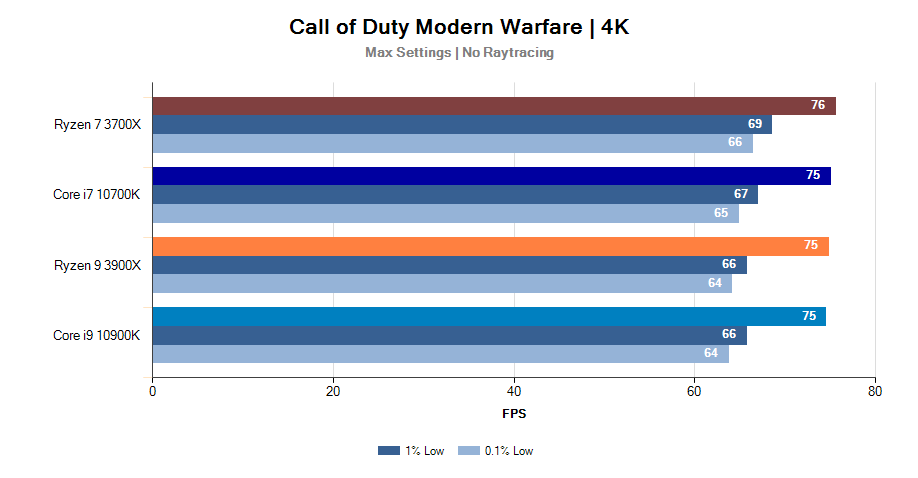
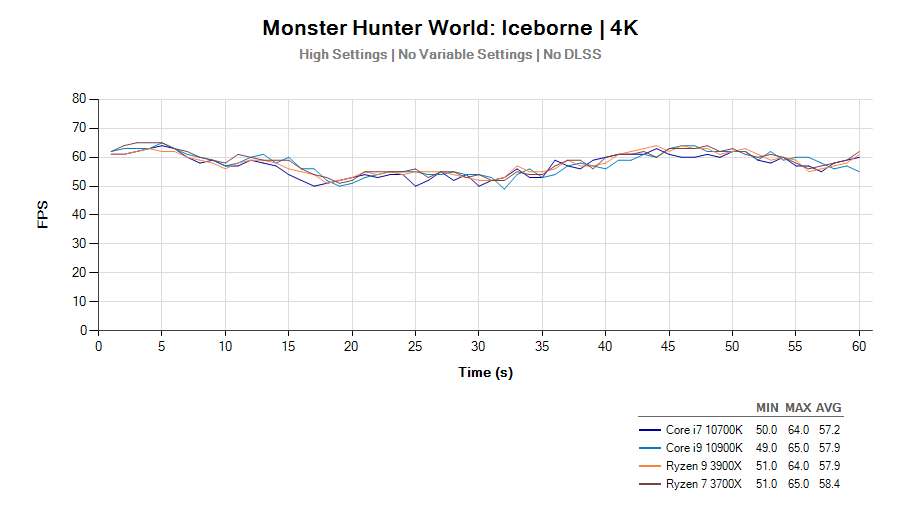
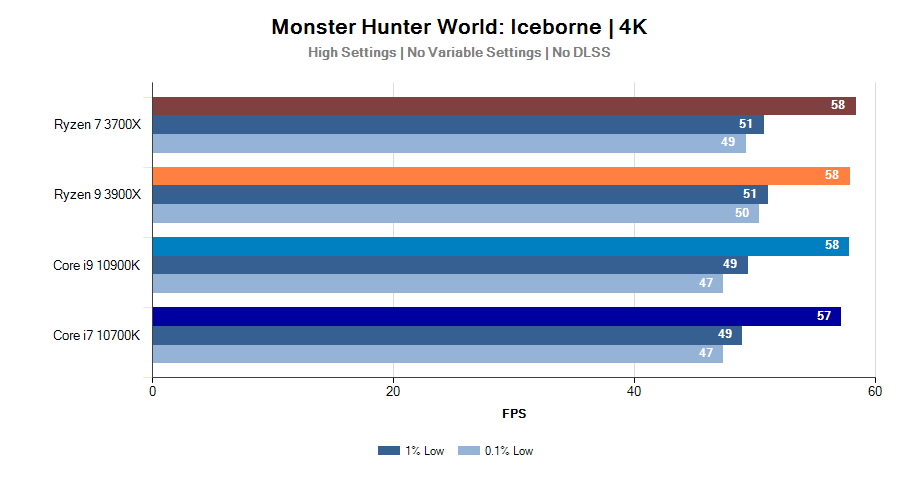


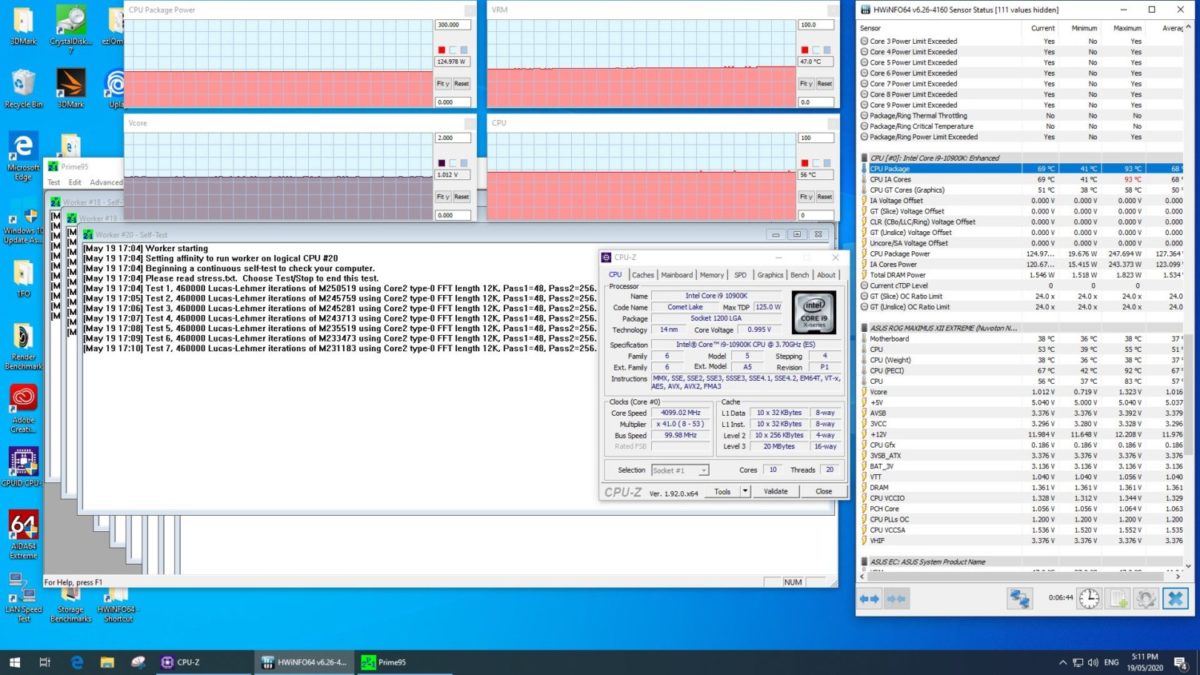
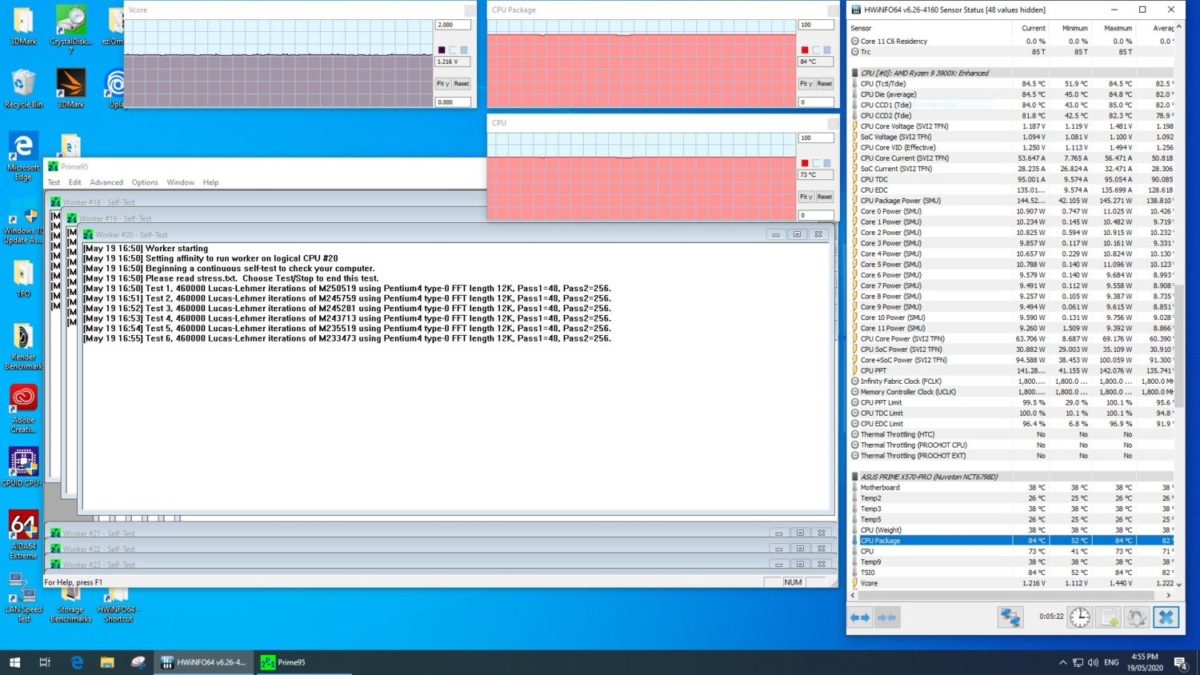
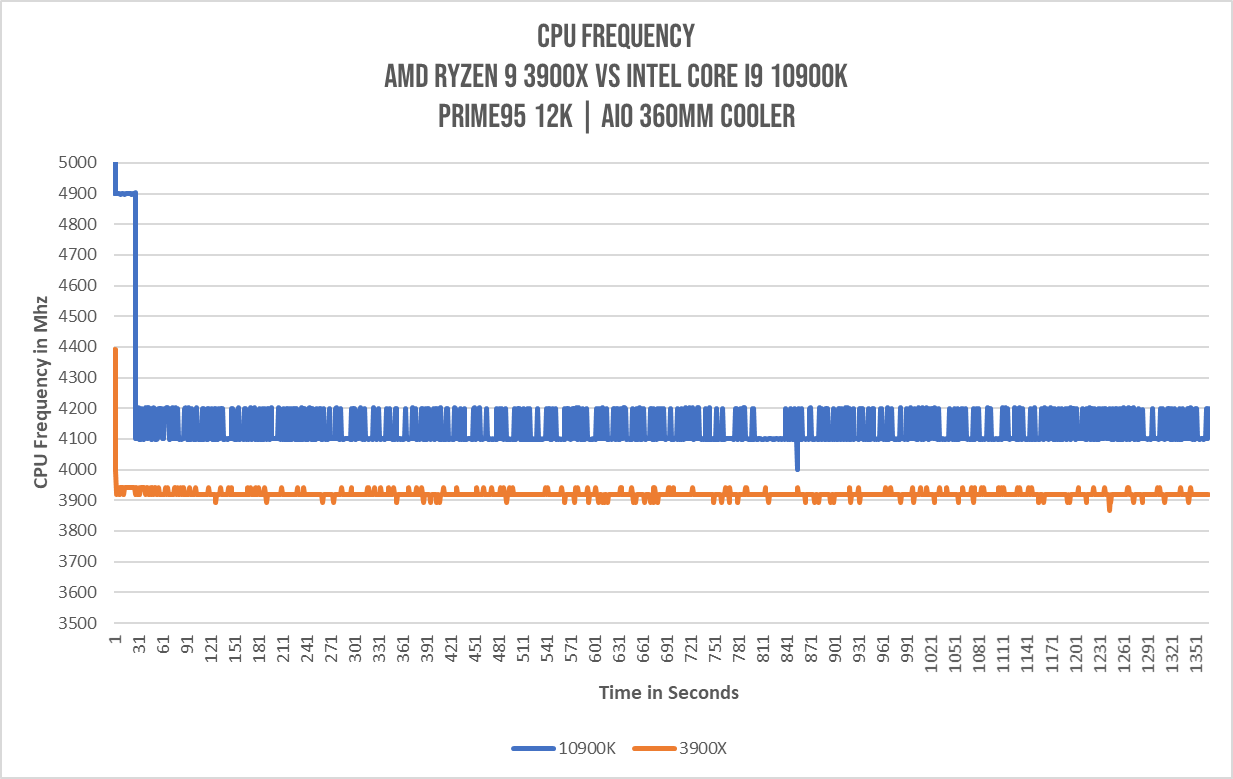
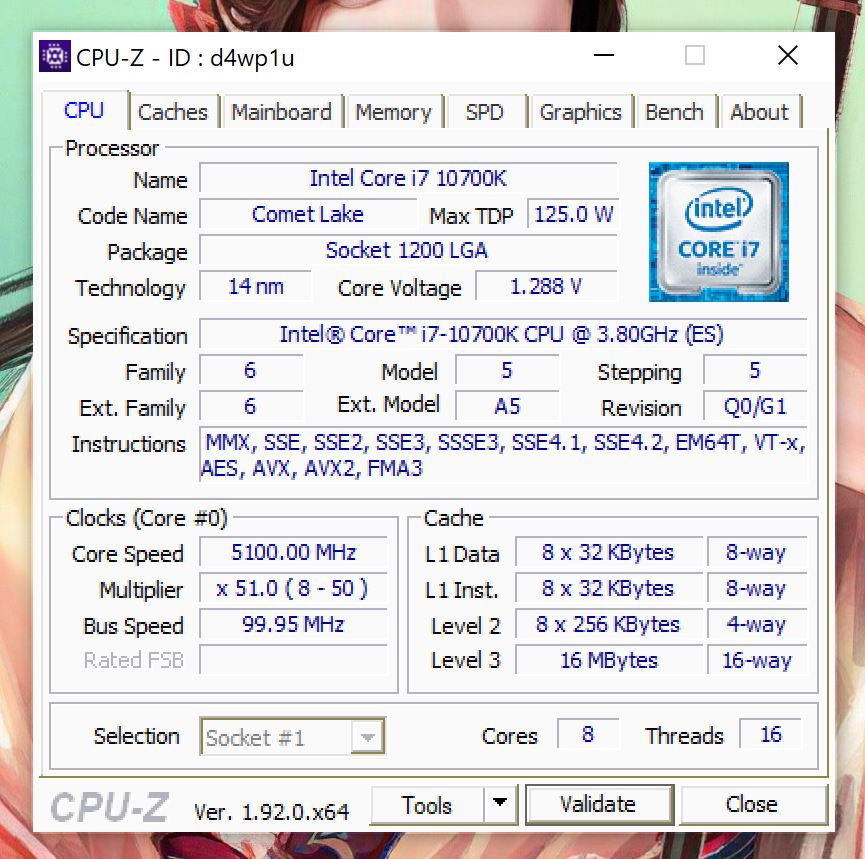
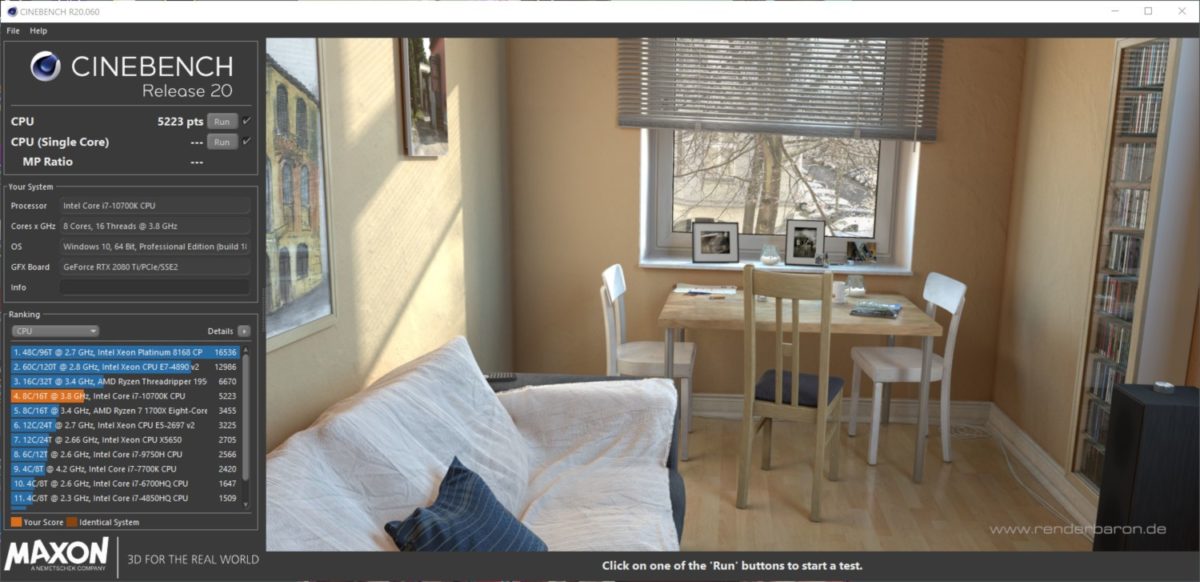
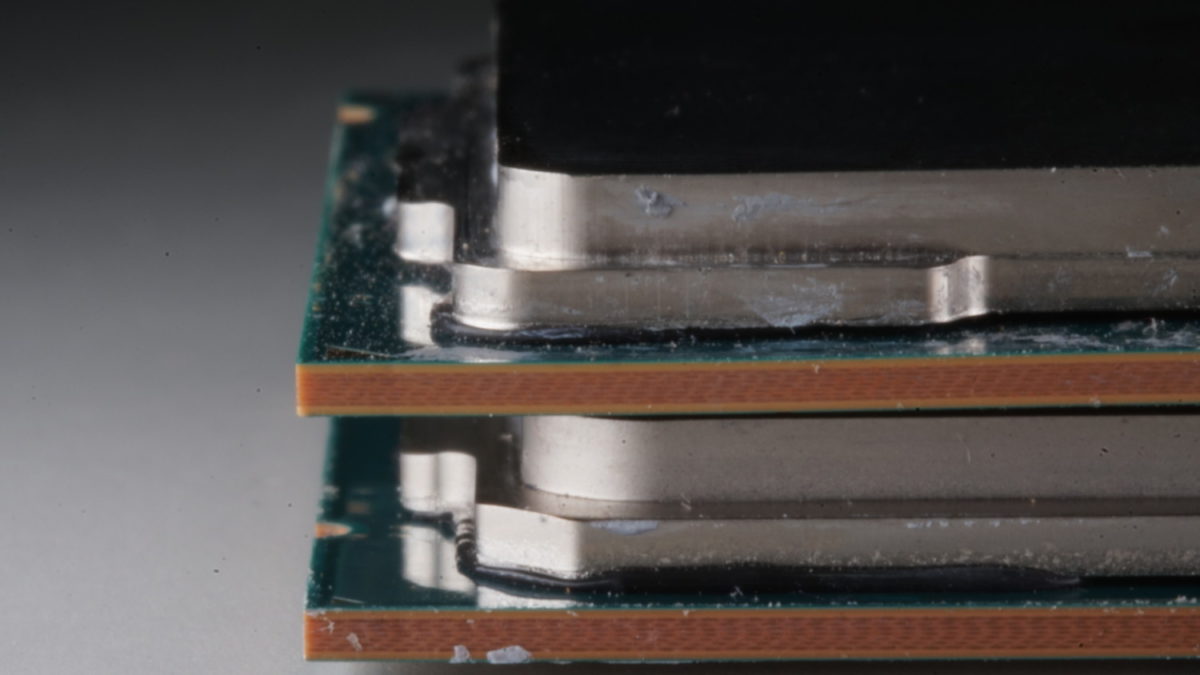

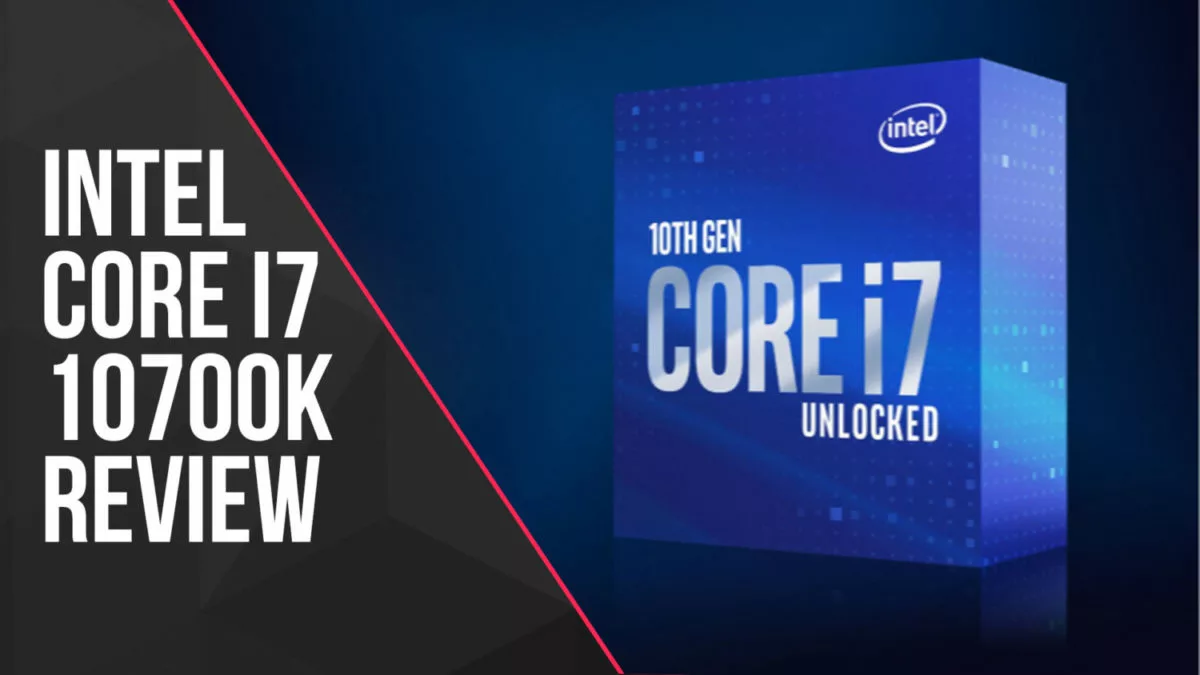
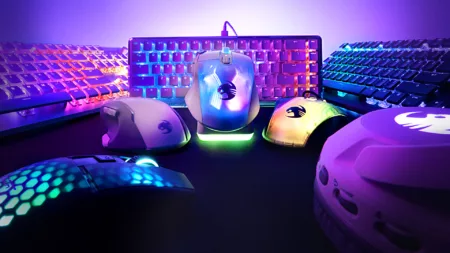
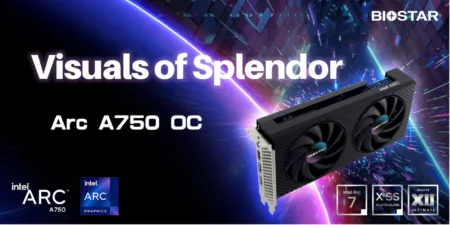
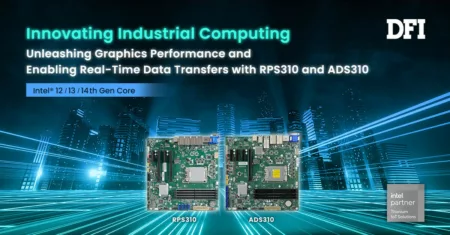
4 Comments
Monster Hunter World 1080p stable 144fps is still a dream 🙁
Hopefully the new RTX GPUs at the end of the year will be able to solve this.
Really useful review. Replacing my 9 year old i7 2600k rig shortly and was considering whether to go i9 10900k with 16GB RAM or i7 10700k with 32GB. On the evidence, going i7 again (clocked to 5.1Ghz).
True but as I play MHW IB on both PS4 and PC, I’ve gotten used to just G-syncing on the PC for the smoothness. I doubt Capcom will do anything about it soon but I appreciate the content they’re putting out and I really don’t mind the framerate just as long as we get decent content 🙂
Only 10-15% frame rates vs. a 3700X at almost half the price? Winner AMD. Just wait until the 4000 series comes out this fall. It will beat the 10700K and still cost $150 less and may not require a new motherboard. Winner AMD again!